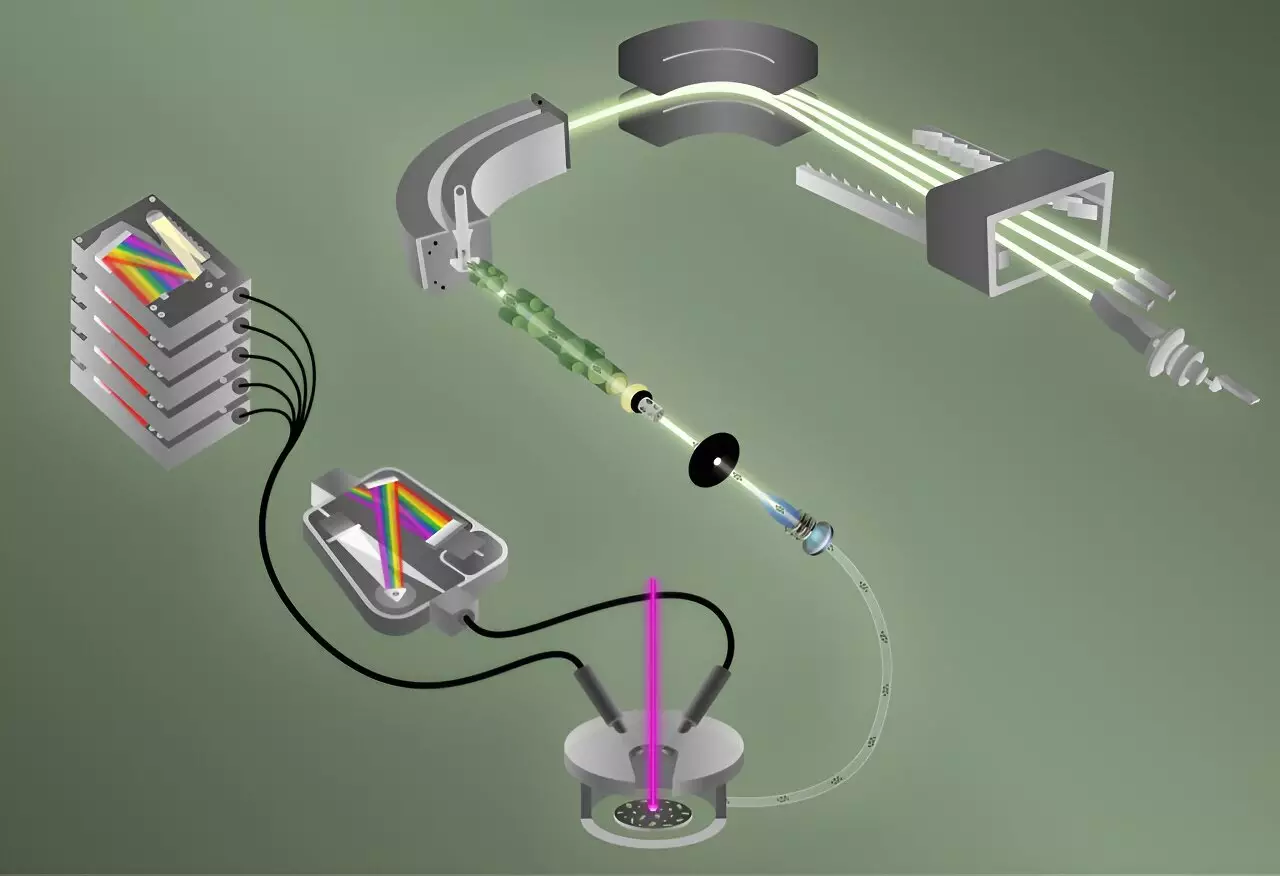Recent advancements at Oak Ridge National Laboratory (ORNL), which operates under the auspices of the Department of Energy, have ushered in a new era for analytical chemistry, particularly in the field of nuclear material analysis. The combined techniques developed by the researchers enable the detection of both fluorine and various uranium isotopes in a single particle—markedly enhancing the role of inspection agencies, such as the International Atomic Energy Agency (IAEA), in ensuring that nuclear materials are not diverted for illicit purposes. The implications of this research extend beyond national security; they venture into realms like materials science and environmental monitoring.
The researchers employed a sophisticated methodology that synergizes two advanced techniques: Laser-Induced Breakdown Spectroscopy (LIBS) and Inductively Coupled Plasma Mass Spectrometry (ICP-MS). Each method carries its own strengths and limitations, but when integrated, they provide a comprehensive profile of a single particle’s elemental and isotopic makeup in a timeframe that is significantly reduced compared to traditional methods.
In essence, LIBS serves as the initial analytical technique, excising the surface material of a sample—like uranyl fluoride—to generate a plasma. This plasma subsequently cools and emits light, which can be analyzed spectroscopically. This process is akin to observing fireworks where different elements explode into varying colors based on their unique electromagnetic signatures. Meanwhile, helium gas plays a crucial role by transporting the gaseous atoms produced in the plasma into the ICP-MS, which is designed to characterize isotopes of uranium with extraordinary precision.
As Benjamin Manard, the study’s lead investigator, pointed out, the brilliance of this dual strategy lies in its ability to simultaneously determine the presence and quantity of both fluorine and uranium isotopes, thus streamlining the analytical process significantly.
The detection of uranium alongside fluorine within the same particle indicates specific nuclear processes and enhances the understanding of material origins. This alignment of isotopic ratios can offer crucial intelligence about the history and processing of nuclear materials while serving as a deterrent against illicit enrichment activities. ORNL co-author Brian Ticknor underscores the vital nature of this detection for nuclear nonproliferation efforts, suggesting that understanding the ratios may shed light on historical processes involved in nuclear material production.
Yet, the significance of this research does not rest solely on nuclear security. The techniques developed have the potential to influence a broad array of fields, including battery manufacturing and environmental science. The multifaceted applicability of this research demonstrates its value beyond the narrow scope of nuclear materials, as the methodologies could be adapted for diverse applications, from tracing microplastic movement in ecosystems to studying advanced materials for energy applications.
Innovative Collaboration and Future Prospects
Manard’s collaboration with a multidisciplinary team at ORNL highlights the importance of diverse expertise in achieving innovative scientific breakthroughs. The integration of LIBS and ICP-MS was a pioneering effort—not previously attempted in a coordinated fashion—which emphasizes the need for interdisciplinary approaches in scientific research to address complex questions.
The pursuit of speed in particle analysis is a common thread among researchers. By successfully analyzing 40 particles in under five minutes, the team has exponentially increased the possibilities for high-throughput analysis of nuclear materials. Manard’s vision extends to the identification of additional uranium compounds, revealing a roadmap for future research that could further enrich the scientific community’s understanding of nuclear materials.
As the field progresses, the application of these techniques could also be extended to investigate other elements that pose similar detection challenges, such as chlorine. This avenue of exploration could open new frontiers in both analytical chemistry and nuclear science.
The confluence of LIBS and ICP-MS techniques at ORNL exemplifies how combining different analytical strategies can yield significant advancements in both speed and specificity of detection. This groundbreaking research not only impacts nuclear nonproliferation but also holds promise for diverse applications in the natural and life sciences, shedding light on an array of materials and processes.
As our understanding deepens and techniques are refined, the necessity of continued innovation in analytical methods becomes apparent. The meticulous work carried out at laboratories such as ORNL is critical, as it lays foundational stones for future developments, shaping a safer and more informed approach to managing both nuclear and environmental challenges. The future indeed looks promising, as enthusiasts are eager to explore the vast potential that lies ahead.


Leave a Reply